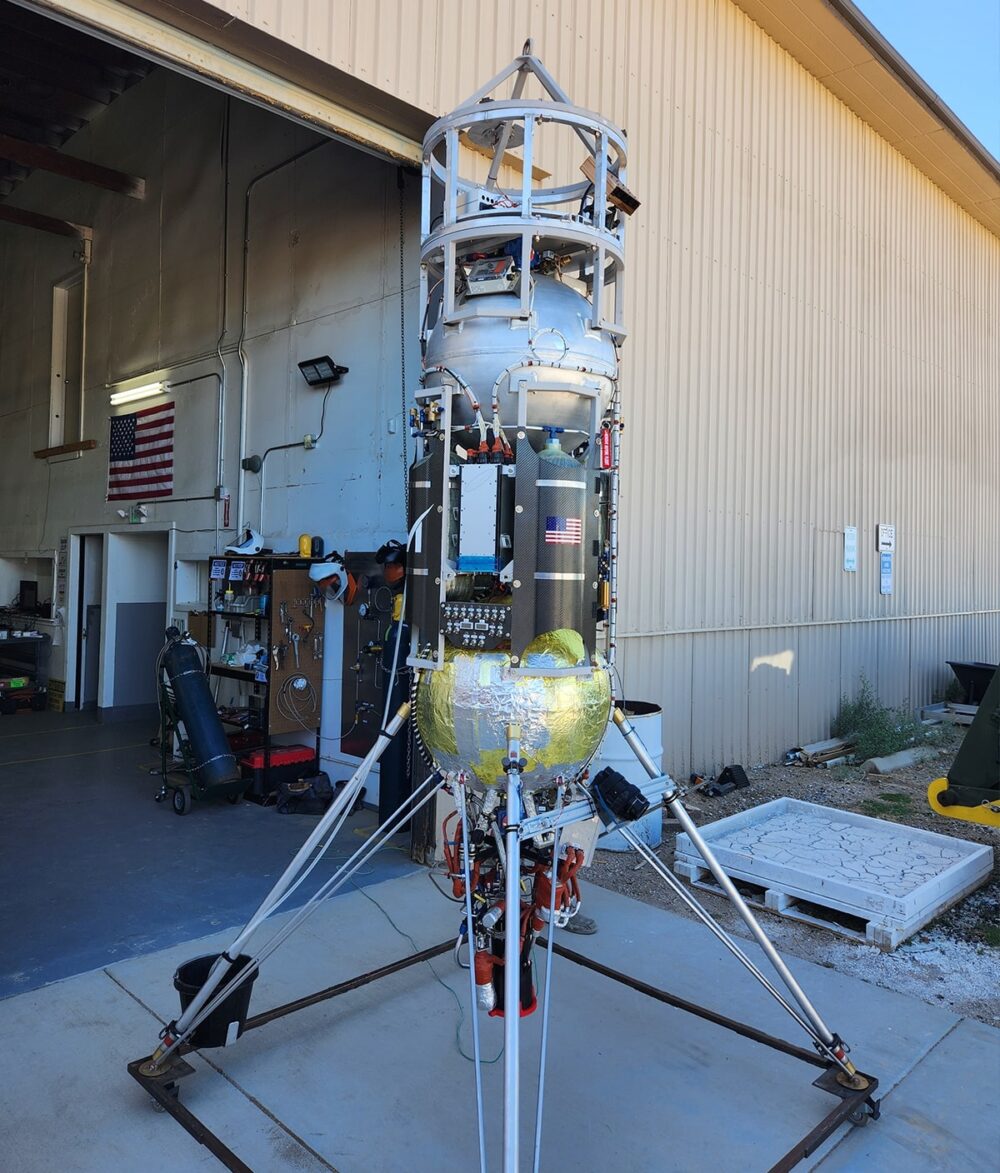Reminder: Pittsburgh helped the US win the Space Race. And while Astrobotic’s Peregrine lunar lander launch to the moon has been postponed since May 2023, the city’s most prominent space tech company hasn’t been standing still.
Last week, the North Side-based company completed its first successful flight test campaign in Mojave, California in partnership with the University of Central Florida.
According to its announcement, four flights aboard the company’s Xodiac vertical-takeoff, vertical landing rocket, aka the Xodiac VTVL, were used to test the effectiveness of the university’s Ejecta STORM laser sensor. The test provides researchers with data that will help researchers and the laser sensor’s developer better understand plume-surface interactions in hopes of humans returning to the moon during NASA’s Artemis program.
The test campaign marked the 20th anniversary of Masten Space Systems — which matters because that’s where Astrobotic’s propulsion and test department gets its workforce and vehicles, after it acquired Masten in September 2022. The propulsion and test department was also responsible for conducting the test campaign. Additionally, the announcement said, last week’s tests added to over 150 successful Xodiac flights with 100% mission success.
“I’m grateful for our talented team and supportive management who have helped us pick back up where we left off,” said Astrobotic’s Xodiac launch conductor, Stefan Lamb, who came to the team from Masten, in a written statement. “Joining Astrobotic has opened up a whole new set of opportunities for us.”
With this milestone achieved, the company plans to focus on projects such as completing its test campaigns for NASA and defense contractor Draper.
During the next Xodiac campaign, the focus will be on providing flight testing for the Bronco Space Club, Orion Labs, and the Texas A&M SeakLab, which are the three TechLeap prize winners. The competition, which is managed by NASA’s Flight Opportunities program, has its participants developing systems to detect hazards from high altitudes.
Other milestones Astrobotic has seen this year include winning a $34.6 million NASA Tipping Point partnership to show off its power transmission capabilities on the moon’s surface in August. Prior to that, in June, the company joined the Westinghouse Electronic Company in signing a Memorandum of Understanding which says they’ll “explore collaboration” on space technology programs for NASA and the Department of Defense. Around the same time, the company became one of many entities participating in the establishment of the Space and Defense Innovation District along with Mirasol Capital and the Carnegie Science Center.
In the near future, the company’s employees say they’re looking forward to continuing to fly and seeing what their technology is capable of.
“I’m thrilled that we can continue to provide this unique flight test capability for our customers as part of Astrobotic,” said Astrobotic’s chief engineer for the propulsion and test department, David Masten. “We designed Xodiac for maximum reusability, and the fact that we’re still flying the same vehicle eight years later says a lot about Xodiac’s durability and the value of the services it provides.”







